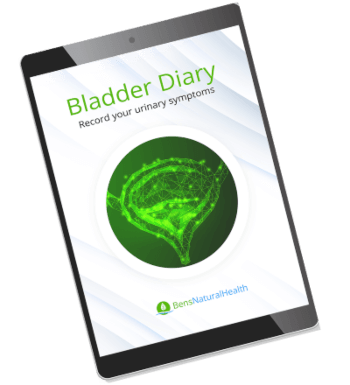- Facts about UTIs
- Facts about bladder infections
- Are bladder infections and UTIs the same thing?
- Bladder infection vs UTI
- How to tell which one you have?
- Is a bladder infection worse than a UTI?
- Is it still a UTI if I do not have any symptoms?
- When to seek medical help?
- Who is at risk of getting a bladder infection or UTI?
- How to prevent a bladder infection or UTI
- Conclusion
- Source
People often use the terms UTI and bladder infection interchangeably, but there are distinct differences between them.
Keep reading to see a detailed comparison of UTI vs bladder infection, including the differences, similarities, how to tell which one you have, symptoms, and risk factors.
Facts about UTIs
A urinary tract infection (UTI) is an infection of any organ(s) along the urinary tract.
Harmful microbes that infect the urinary tract are also known as uropathogens. These pathogens may be introduced into the urinary tract via the urethra.
They infect the lower urinary tract, causing a bladder infection. They can also ascend into the upper urinary tract, causing a kidney infection.
UTIs can affect both men and women, however, women are at a higher risk of getting a UTI than men.
UTIs are classified as uncomplicated UTIs or complicated UTIs. This classification depends on the person’s underlying health status and the microbe causing the UTI.
Usually, an uncomplicated UTI, such as a simple bladder infection, is self-limiting, but it may recur.
| Classification | Example |
| Uncomplicated UTI | UTIs that occur in previously healthy people. UTIs occurring in people without structural abnormalities of the urinary tract. The most common uncomplicated UTI is a simple bladder infection or acute simple cystitis. |
| Complicated UTI | UTIs in people who are pregnant. UTIs in people who are immunocompromised or have comorbidities such as diabetes, spinal cord injuries, and kidney diseases. UTIs in people with a structural abnormality of the urinary tract. UTIs in people with in-dwelling urinary catheters (also known as catheter-associated UTI) |
UTIs can also be classified into upper or lower, depending on which organs are affected.
However, healthcare providers may have difficulty determining the site of the UTI. Hence, this type of classification method is not preferred by some doctors.
| Classification | Example |
| Lower UTI | Cystitis (an infection of the bladder) Urethritis (an infection of the urethra) |
| Upper UTI | Pyelonephritis (an infection to one or both of the kidneys) |
Facts about bladder infections
A bladder infection or cystitis is a type of urinary tract infection that is confined to the bladder.
Usually, bladder infections are caused by bacteria. The most prevalent bacteria causing bladder infections is E. coli. This bacteria causes 75 to 95% of simple bladder infections.
Women have a higher risk of getting a bladder infection. One of the reasons is that the female urethral opening is located nearer to the rectum and vagina, where many other bacteria reside.
The female urethral length is also relatively shorter in females compared to males. Hence, it is easier for bacteria from the nearby structures to enter the bladder and infect it.
Get your FREE bladder diary
- Daily bladder diary
- Better understand your urinary symptoms
- Step-by-step guide
Are bladder infections and UTIs the same thing?
Since the bladder is a part of the urinary tract, a bladder infection is a type of UTI. Specifically, a bladder infection is a type of lower UTI.
Since bladder infections are a subset of UTIs, some of the bladder infection symptoms may overlap with other UTI symptoms.
Bladder infection vs UTI
| Aspect | Bladder Infections | UTIs |
| Organs involved | Bladder | Any organs in the urinary tract, including the urethra, bladder, and kidneys |
| Similar symptoms | Painful or burning sensation during urination Increased urination frequency Increased urge to urinate Blood in urine Foul-smelling urine Cloudy urine | |
| Different symptoms | In a simple bladder infection: Absence of fever Pain above the pubic region (where the bladder is) Less severe symptoms than kidney infections | In a kidney infection: Fever Flank or back pain Nausea and vomiting |
| Risk factors | Female sex Presence of structural urinary tract abnormalities Being sexually active Previous UTIs Underlying conditions such as diabetes, neurogenic bladder, benign prostatic hyperplasia (BPH), and kidney stones. Pregnancy Menopause On long-term in-dwelling urinary catheter Poor toileting hygiene | |
| Treatment | Can be resolved spontaneously May be treated with antibiotics when indicated. | Antibiotics Analgesics Antipyretics May require hospitalization |
How to tell which one you have?
It is often difficult to tell the two apart because a bladder infection can ascend and infect the upper urinary tract.
When the infection reaches the upper urinary tract, it can result in a kidney infection or pyelonephritis.
Symptoms of a bladder infection are usually less severe compared to a kidney infection.
However, there are some notable features of a kidney infection, such as flank pain, nausea, vomiting, and fever. In a simple bladder infection, fever is rarely present.
Is a bladder infection worse than a UTI?
A simple bladder infection is usually self-limiting, which means it can resolve on its own.
Studies showed that simple bladder infections can spontaneously resolve in 20% of the cases, especially when the person is well-hydrated.
An upper UTI, such as a kidney infection, typically presents more seriously than a simple bladder infection.
In cases where a person has a weakened immune system, UTIs can result in sepsis. Sepsis is a potentially fatal bloodstream infection.
A weakened immune system can happen as a result of a drug, a disorder, or after cancer chemotherapy.

Is it still a UTI if I do not have any symptoms?
Some people can have a condition called asymptomatic bacteriuria, where they do not experience UTI symptoms, but their urine tests are positive for bacteria-causing UTIs.
Asymptomatic bacteriuria is common, especially in people who need urinary catheters for prolonged periods of time. Usually, asymptomatic bacteriuria is not treated unless warranted.
For people with asymptomatic bacteriuria, certain risky conditions may require treatment, such as:
- Pregnancy
- Kidney transplant
- Immunosuppressed or immunocompromised
- Children with structural abnormalities of the urinary tract
- Prior to certain invasive procedures
When to seek medical help?
If you suspect that you may have a bladder infection or a UTI, you should consult your healthcare provider.
Common symptoms of a UTI are frequent urination, increased urge to urinate, and a burning or painful sensation during urination. It can take several hours or even days for UTI symptoms to develop.
If you start developing a fever, chills, flank pain, nausea, or vomiting, please seek medical attention immediately.
Healthcare providers can diagnose UTIs based on their symptoms and by analyzing your urine specimen (urinalysis).
Your clean-catch urine or midstream urine specimen can be analyzed in the office or in the laboratory.
A positive test for UTIs means that a large enough number of bacteria or other pathogens in your urine sample.
Sometimes, your healthcare provider may order a test called urine culture to identify which type of bacteria is causing the UTI and subsequently help them to decide the best type of antibiotics to use for treatment.
Choosing the right antibiotics to combat the infection can reduce antibiotic resistance.
In some cases, such as if you are not responding to the initial therapy for the UTI, your healthcare providers may order imaging tests such as ultrasonography, computer tomography (CT) of the upper urinary tract, or a cystoscopy to rule out other problems such as urinary obstruction, stones, diverticula, or abscess formation.
Who is at risk of getting a bladder infection or UTI?
UTIs are more common among women than men. Women are at risk of being infected up to 30 times more compared to men.
Other factors which may increase the risk of developing a UTI include:
- Having structural urinary tract abnormalities
- Being sexually active
- Previous UTIs
- Underlying conditions such as diabetes, neurogenic bladder, benign prostatic hyperplasia (BPH), and kidney stones.
- Being pregnant
- Menopause
- Having a long-term in-dwelling urinary catheter
- Having poor toileting hygiene

How to prevent a bladder infection or UTI
Although UTIs are one of the most common infections, it can be prevented by taking the following measures:
- Wipe from front to back and practice good toileting hygiene
- Pass urine after sexual intercourse
- Avoid spermicides and diaphragms during sexual intercourse
- Wear loose undergarments, preferably made of cotton
- Drink plenty of water can help dilute your urine
- Avoid irritating your bladder by cutting down on caffeine, alcohol, and spicy food
Certain people who are at risk of frequent UTIs should discuss the benefits of taking low-dose antibiotics with their healthcare providers to prevent a future UTI.
Women who are on long-term antibiotics should also discuss contraceptive methods with their healthcare providers.
Postmenopausal women who tend to get UTIs should also discuss the use of vaginal estriol cream with their healthcare providers.
Conclusion
A bladder infection is a type of urinary tract infection, specifically a lower urinary tract infection. It is confined to the bladder, but the infection may ascend to the upper urinary tract, causing a kidney infection.
Hence, a bladder infection and a kidney infection may present similarly because the kidney infection was likely caused by the bladder infection.
Common symptoms of UTIs are an increase in urination frequency and urgency, bloody or cloudy urine, and foul-smelling urine.
A bladder infection usually presents less severely and may resolve spontaneously, compared to a kidney infection which could be fatal if not treated promptly.
If you suspect that you may have a UTI, please consult your healthcare provider. Symptoms such as fever with chills, flank pain, nausea, and vomiting are red flags to indicate a more serious infection and require urgent medical attention.
Despite being one of the most common infections, UTIs are preventable and treatable.
Explore More








